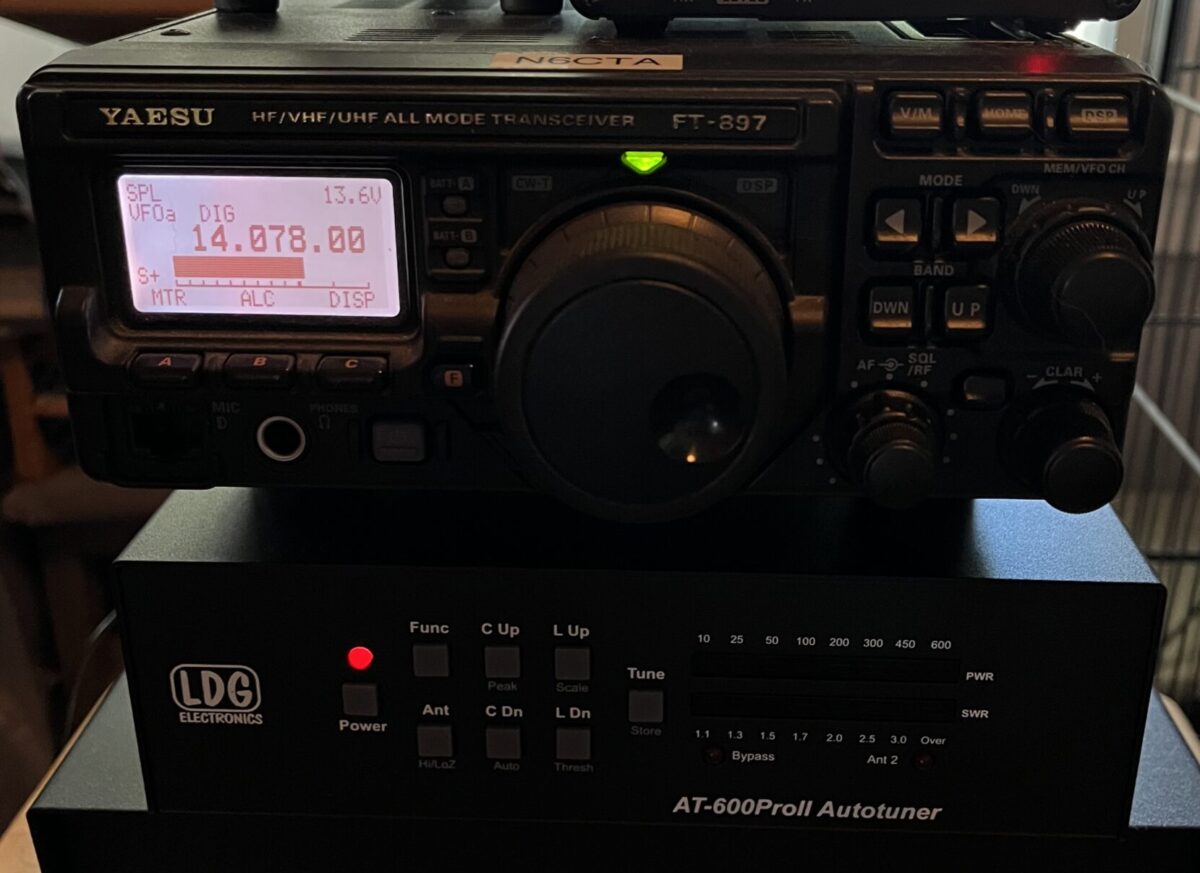The benefit of using an automatic antenna tuner is not to constantly use the full automatic tuning procedure, it’s to make use of the memory tune option! The following is the process I use to configure my automatic antenna tuner’s memory tune function for optimal use with digital modes.
Auto ATU Setup Procedure:
- In your digimode software of choice select the general calling frequency for the band. In software like WSJT-X this is very easy to do from the dropdown menu. In Fldigi, and with other software modems, you’ll have to do some research to see where on the band people hang out.
- Set the TX offset in your software so that it is in the center of the RX passband.
- It’s generally safe to assume the RX passband is 3000Hz wide in SSB and DATA mode radio settings so the center offset would be 1500Hz up (Digimodes are nearly universally USB) from the carrier frequency.
- As mentioned in a previous post, in WSJTX, enable “Remember power settings” checkboxes for Tune and Transmit under the Audio tab in settings.
- For each band of operation, set the power output slider when Tune is enabled so that the power output is only high enough to trigger the automatic tuner. For me, this tends to be around 10W.
- If using split VFO (and you should be), make sure that you have clicked the “Tune” button in your software to set the TX VFO to the correct carrier frequency. Using split VFO allows the software to set the TX VFO to a carrier that best centers the offset in the passband regardless of where it is allowing for efficient transmission.
- Now, run a full manual tune with your auto tuner
- Repeat this process for each band.
Notes:
To best use this, when you’d like to change modes, simply set your offset to 1500Hz, change the band in the software to the carrier frequency, and hit the Tune button and let it run for a few seconds to give the tuner a chance to flip its relays. You should now have a good tune for anywhere in the TX/RX passband. This process allows me to play radio from anywhere via VNC without having to worry too much about tuning. Before I start a remote session, I usually call CQ once and check PSKreporter to see if my signal is being heard as well as I am used to seeing it. If there is a problem, you’ll likely notice it pretty quickly so you can stop operation to prevent damaging any hardware.
IMPORTANT! – Make sure your antenna tuner is rated for the output and mode you intend to use it for. I use a “600W” tuner because it is actually only rated for 250W digital and I operate at 100W. This gives me the headroom I need to feel comfortable using the tuner at my radio’s full power. You’ve been warned!
